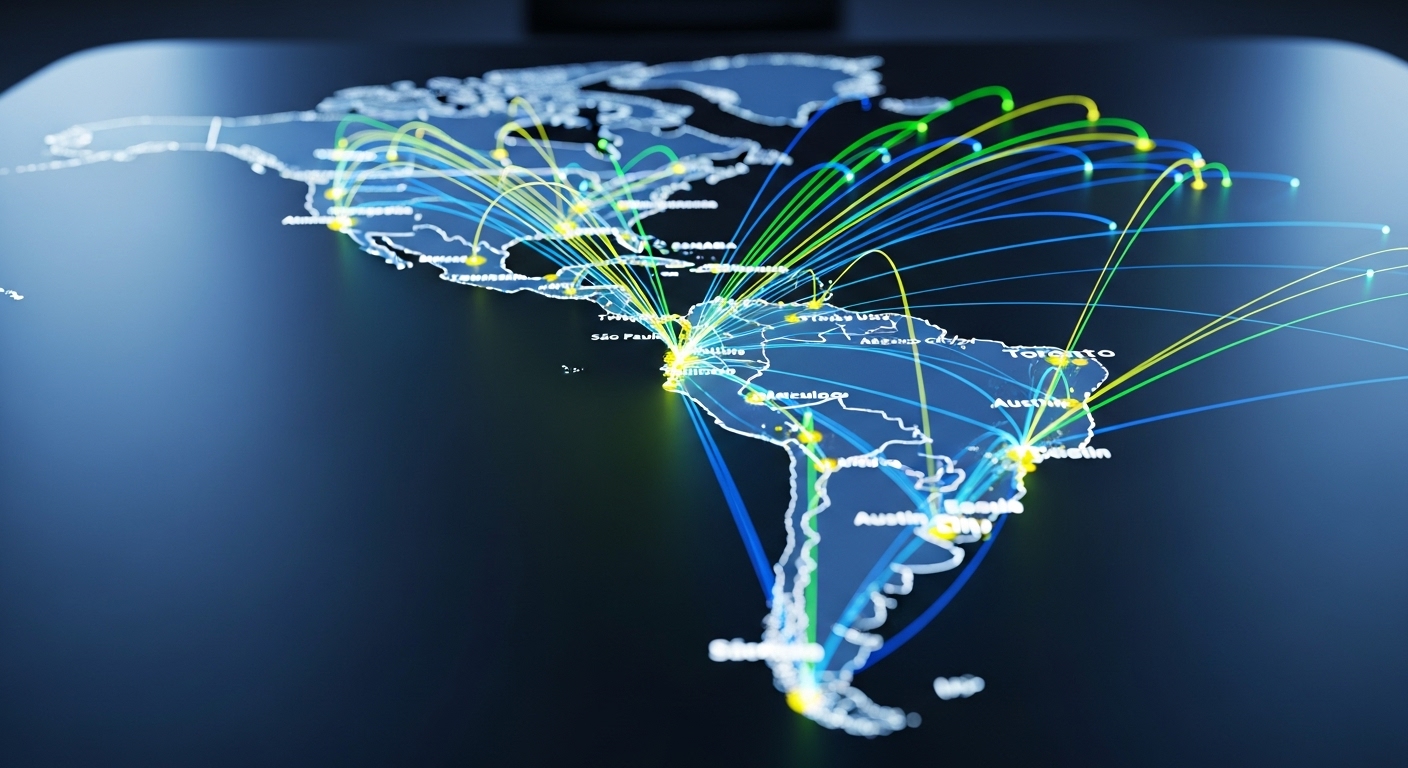The Asia-Pacific region is undergoing a profound transformation, rapidly emerging as the epicenter of global economic and technological advancement. At the heart of this evolution lies a dynamic interplay between finance and technology, creating a powerful nexus that is reshaping markets, driving innovation, and attracting global investment. This strategic confluence is not just an abstract trend but is vividly embodied in key urban hubs that act as catalysts for regional growth. These centers are more than just geographical locations; they are integrated ecosystems where capital, talent, and data converge, creating a gravitational pull for businesses aiming to capture the region’s immense potential. Understanding the mechanics of these leading hubs is crucial for any organization looking to navigate the complexities and opportunities of the APAC market, as they provide a blueprint for resilience, innovation, and strategic growth in the 21st century.
The new digital economy of Asia-Pacific
The Asia-Pacific (APAC) region has firmly established itself as the engine of the global digital economy. This transformation is driven by a confluence of factors, including a massive, youthful, and digitally native population, increasing mobile penetration, and government-led initiatives promoting digitalization. Unlike Western markets that experienced a more gradual, desktop-first internet evolution, many APAC economies have leapfrogged directly to a mobile-first paradigm. This has fostered a unique and fertile ground for innovation in areas like e-commerce, digital payments, and super-apps, which integrate multiple services into a single, seamless user experience. The sheer scale is staggering; the region is home to more than half of the world’s internet users, creating an enormous market for digital goods and services. This rapid adoption of technology has fundamentally altered consumer behavior, supply chains, and business models. Companies are no longer just competing on product or price but on the quality and convenience of their digital interface, forcing a radical rethinking of customer engagement strategies and operational efficiency. The result is a vibrant, competitive landscape where agile startups and established corporations alike are leveraging technology to meet the evolving demands of this digital-first consumer base.
Fintech as the financial backbone
Nowhere is the region’s digital transformation more evident than in the financial sector. Fintech is not merely an industry vertical in APAC; it is the fundamental backbone of the new economy, facilitating the seamless flow of capital and commerce. The proliferation of digital wallets, alternative lending platforms, and blockchain-based solutions has democratized access to financial services for millions of underbanked individuals and small-to-medium-sized enterprises (SMEs). This financial inclusion is a powerful catalyst for economic growth, unlocking new markets and empowering entrepreneurship. In this context, leading financial centers are differentiating themselves not just through traditional banking strengths but through their ability to foster a vibrant fintech ecosystem. For instance, the strategic initiatives within Marina Bay showcase how purpose-built infrastructure and a supportive regulatory environment can accelerate innovation. These hubs are becoming living laboratories where new financial technologies are developed, tested, and scaled, influencing regulatory frameworks and business practices across the entire region. The integration of artificial intelligence and machine learning for credit scoring, fraud detection, and personalized banking is setting new global standards, underscoring APAC’s role as a leader in the future of finance.
The rise of smart and sustainable infrastructure
Parallel to the digital revolution, a profound shift towards smart and sustainable urban development is redefining the competitive landscape of APAC’s business hubs. The rapid urbanization across the region presents both challenges and opportunities, compelling city planners and developers to integrate technology into the very fabric of the built environment. This goes far beyond basic connectivity; it involves creating intelligent ecosystems where data is used to optimize energy consumption, manage traffic flow, enhance security, and improve the overall quality of life for occupants. Sustainability is no longer a corporate afterthought but a core strategic imperative, driven by investor demand, regulatory pressure, and a growing awareness of climate risk. Buildings are now being designed with green certifications and biophilic principles, integrating nature to enhance well-being and productivity. This focus on creating human-centric, eco-conscious environments is becoming a key differentiator in attracting and retaining top talent. Companies are increasingly making location decisions based on the quality of the infrastructure, its environmental credentials, and its ability to support a modern, flexible, and health-conscious workforce, making sustainable urban development a critical pillar of economic competitiveness.
Talent, capital, and data: the three core flows
The long-term dominance of any business hub is ultimately determined by its ability to attract and manage three fundamental resources: talent, capital, and data. These are the lifeblood of the modern economy, and their fluid movement is what separates a thriving ecosystem from a stagnant one. The most successful APAC hubs actively cultivate an environment where these flows can converge and cross-pollinate. Attracting top talent requires more than just high salaries; it demands a high quality of life, a vibrant cultural scene, and opportunities for professional growth. This is why leading centers invest heavily in education, public amenities, and a regulatory framework that welcomes skilled professionals from around the globe. Similarly, the flow of capital is drawn to environments with political stability, transparent legal systems, and a deep pool of investment opportunities. Finally, in an increasingly data-driven world, the infrastructure and regulations governing data flow—its storage, security, and analysis—are paramount. Hubs that provide robust digital infrastructure and clear, business-friendly data governance policies create a significant competitive advantage. The interplay between these three flows creates a virtuous cycle: talented individuals create innovative companies, which attract capital, which in turn generates valuable data, further enhancing the hub’s appeal to new talent.
Integrating technology into the physical workspace
The evolution of APAC’s business hubs is mirrored in the transformation of the corporate workspace itself. The office is no longer just a place to work; it is a strategic asset for fostering innovation, collaboration, and corporate culture. Leading companies are integrating smart technology directly into their physical environments to create responsive, efficient, and human-centric spaces. This includes IoT sensors that monitor air quality, lighting, and space utilization, allowing for real-time adjustments that optimize the environment for employee well-being and productivity. Advanced building management systems, like those found in the premier developments of Marina Bay, demonstrate a commitment to operational excellence and sustainability. Furthermore, the workplace is becoming a key touchpoint for brand identity and employee experience. Seamlessly integrated audiovisual technology, hot-desking systems managed via mobile apps, and collaborative tools are now standard expectations. This digital layer on top of the physical space not only improves efficiency but also provides valuable data on how employees interact with their environment, enabling continuous improvement and a more agile response to the changing needs of the workforce, particularly in a hybrid work era.
The strategic imperative of location
In the interconnected yet complex landscape of the Asia-Pacific, the choice of a strategic location is more critical than ever. It is a decision that extends far beyond a physical address; it is about plugging into a dynamic ecosystem that can support and amplify a company’s growth ambitions. The ideal hub provides a confluence of market access, regulatory stability, a deep talent pool, and world-class infrastructure. It acts as a springboard into the diverse and fast-growing markets of the region while providing a secure and efficient base of operations. The decision-making calculus must weigh factors such as connectivity—both digital and physical—the availability of skilled labor in key sectors like technology and finance, and the presence of a supportive business community, including venture capital, professional services, and peer networks. The leading hubs have proven their ability to provide this holistic environment, creating a powerful competitive advantage for the companies that reside there. They are not merely passive backdrops for business but active partners in success, offering the tools, resources, and network effects necessary to thrive in the world’s most dynamic economic region.
Conclusion
The Asia-Pacific region is not just a collection of individual markets but an increasingly integrated economic network, with leading business hubs serving as the critical nodes. These centers are where the future of commerce is being actively shaped, driven by the powerful currents of digitalization, fintech innovation, and sustainable development. For global enterprises, establishing a presence in a premier hub is no longer a luxury but a strategic necessity for tapping into the region’s vast opportunities. Locations like Marina Bay offer a compelling model of this new paradigm, blending state-of-the-art infrastructure with a forward-thinking regulatory environment and a deep concentration of talent and capital. They provide a stable and efficient platform from which to navigate the diverse cultural, political, and economic landscape of APAC. As the global center of economic gravity continues to shift eastward, the strategic decisions businesses make about their physical footprint in this region will be a defining factor in their long-term success. Choosing the right hub is choosing a strategic partner in growth, resilience, and innovation for the decades to come.





